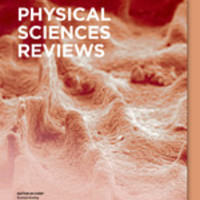Total Reflection X-Ray Fluorescence
Item
Title
Total Reflection X-Ray Fluorescence
List of Authors
Martina Schmeling
Abstract
Total reflection X-ray fluorescence (TXRF) spectrometry is a non-destructive and surface sensitive multi-element analytical method based on energy dispersive X-ray fluorescence spectrometry with detection limits in the lower picogram range. It utilizes the total reflection of the primary X-ray beam at or below the critical angle of incidence. At this angle, the fluorescence intensity is substantially enhanced for samples present as small granular residue or as thin homogenous layer deposited at the surface of a thick substrate. Generally, two types of application exist: micro- and trace-analysis as well as surface and thin-layer analysis. For micro- and trace-analysis, a small amount of the solid or liquid sample is deposited on an optically flat substrate, typically quartz or polycarbonate. The dried residue is analyzed at a fixed angle setting slightly below the critical angle. Quantification is carried out by means of internal standardization. For surface and thin-layer analysis, the surface of an optically flat substrate is scanned. Variations of the incident angle of the primary X-ray beam provide information about the type and sometimes also the amount of material present at or slightly below the surface of the substrate. Major fields of application are environmental samples, biological tissues, objects of cultural heritage, semiconductors and thin-layered materials and films.
Date
2019
Publication Title
Physical Sciences Reviews
Publisher
De Gruyter
Identifier
DOI 10.1515/psr-2017-0161
Bibliographic Citation
Schmeling, Martina. Total Reflection X-Ray Fluorescence, 2019, Physical Sciences Reviews
